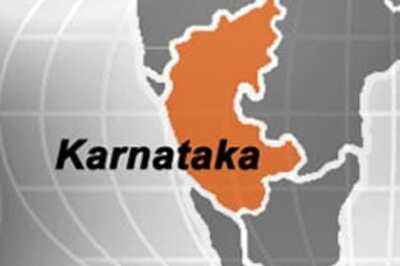
views
That the Congress is in a state of drift is among the country’s worst-kept secrets.
But its state of affairs in Maharashtra, where it was born as the Indian National Congress in 1885, may be a good petri dish for analysing this gradual implosion in the party.
Here, while the Congress is living out the contradiction of being in power, but not in authority, it is also riven with rising factionalism and has to contend with an elephant in the room — its ally, the Nationalist Congress Party (NCP).
With a perception that the Grand Old Party is gradually wilting away, the NCP, as Congress leaders fear, is moving in to mop up the pickings, and make inroads into the social base of the Congress, especially among Muslims and Dalits.
Though the Congress is part of the Shiv Sena-led Maha Vikas Aghadi (MVA) regime under Uddhav Thackeray, its ministers complain that the government is seen as that of the NCP, which holds the cream portfolios, or at best, of the Shiv Sena-NCP. What is worse, they lament, is that the party’s state or central leadership is unable to respond to the impending crisis, fiddling away like Nero while Rome burnt…
With the Shiv Sena and NCP seemingly drawing close, Congress leaders fear that the two may eventually join hands later in the day, leaving it out in the cold.
Though a sense of memory in politics may be ephemeral, the NCP was born in 1999, as the culmination of a power struggle within the Congress, even though the two buried differences to form the government in Maharashtra soon after.
As a chip of the old block, the NCP can up to an extent grow at the expense of the Congress, which despite its electoral debacles, retains some of its social footprint.
NCP chief Sharad Pawar’s criticism about the Elgar Parishad investigations being transferred to the National Investigation Agency (NIA), and the Ram temple at Ayodhya being constructed during the coronavirus pandemic, may be aimed at these sections.
Buddhist Dalits, or erstwhile Mahars, who form around 8% of the population, are upset at the gradual erosion of their clout in politics and the rise of political Hindutva. The Mahars converted to Buddhism with Dr Babasaheb Ambedkar in 1956, and are the largest and most militant block among the Dalits in Maharashtra. As converts from Hinduism, they are seen as the challengers of political Hindutva, and hence, have clashed with the Shiv Sena in the past.
The Muslims are also upset at the Congress being unable to articulate a strong response to the BJP and its majoritarian politics.
As a Congress minister admits, the bulwark of their support were sections of the Muslims and Dalits, especially Buddhist Dalits and smaller OBCs, with the landed Marathas, especially those in the western Maharashtra belt, choosing to go with the NCP.
However, instead of nurturing a fresh generation of leaders from these groups, the party has chosen to nominate Maratha leaders, who lack much of a mass base, for organisational or cabinet posts. Apart from the NCP, the Congress also has to contend with players like the All India Majlis-E-Ittehadul Muslimeen (AIMIM), which have struck a chord with sections of the Muslim and up to an extent, Dalit youth.
The Vanchit Bahujan Aghadi (VBA) led by Dr Ambedkar’s grandson Prakash Ambedkar, was blamed for the rout of the Congress-NCP in eight Lok Sabha seats. The VBA had walked away with a section of Dalits, Muslims and smaller OBCs, which were earlier out of the power matrix. Its subsequent meltdown has seen the NCP, and not the Congress, move in for the kill. Two former VBA legislators are now in the NCP.
As Congress leaders note, the Congress and NCP were never on the same page even between 1999 and 2014, when they shared power in the state and at the Centre (2004-2014). As the leader of a competing party, Pawar had always tried to chip away at the Congress vote-base or paint it into a corner politically.
A line often repeated by a senior Congressman is about how “contrary to political perception, it is the Congress, and not the BJP or Shiv Sena, which have been the NCP’s enemy number one”.
Today, with Congress being unable to rise to the occasion despite being the principal opposition, Pawar, who is credited with bringing together the disparate parties in the MVA, is being seen as a major challenger to the BJP.
Despite its pretensions of being a national party, the NCP has never managed to break the jinx and get double-digit Lok Sabha seats from Maharashtra or surpass its 2004 tally of 71 in the state assembly. Pawar may use the outreach to Muslims and Dalits for developing a larger social coalition to build on the party’s traditional base of Marathas (kshatriyas) and Kunbis (tillers).
The NCP has been restricted to largely the Western Maharashtra belt, with a bit presence elsewhere. Developing an incremental base, albeit at the cost of the Congress, may help spread its wings.
While the Maratha-Kunbis, who also comprise the landed elite, are often at odds with smaller OBCs and Dalits, this social alliance may reduce some social friction between these groups.
Even the most hard-bitten of Congress supporters admit that their party has lost its killing spirit, something that is a must when ranged against 24X7 politicians like Prime Minister Narendra Modi, Home Minister Amit Shah or even the old war horse Pawar. What is worse, in Maharashtra, it has ceded space to the NCP, allowing it to set or hijack the narrative.
For instance, during the state assembly elections, when the BJP and Shiv Sena seemed poised to come to power again, the party had all but given up on its chances. However, a blistering, determined campaign by Pawar for his defection-ridden NCP that had saved the day for his ally.
That leaders within the Congress have been ranged against each other in the government and organisation have led to major embarrassments. A series of missteps saw the party being forced to withdraw its second candidate to ensure an unopposed election to the legislative council in May.
When the leadership deliberated the pros and cons of supporting a Shiv Sena-led regime, it was the specter of dissensions from the party that forced its hand on joining the government rather than extending outside support.
Ironically, in the Lok Sabha polls held months earlier, it was a Shiv Sena defector, Suresh (Balu) Dhanorkar, who helped save face for the Congress, as the sole victor from Maharashtra, even as veterans like Sushilkumar Shinde and Ashok Chavan bit the dust. Dhanorkar’s nomination from Chandrapur, where he trounced then union minister of state for home Hansraj Ahir, came at the last minute, in the culmination of an intense feud in the party.
But, lulled into complacency by power, which was as unexpected as the Biblical manna from heaven, the Congress may be lured into a sense of complacency like the frog in water that has been set to boil gradually. This is a far cry from the days where the Congress held almost undisputed sway in Maharashtra, striding the political area like a Colossus.
As a senior Congressman from Vidarbha always noted, it is only the Congress or a break-away faction which can defeat the Congress in Maharashtra, much like the powerful Yadava clan of Lord Krishna, which destroyed itself in a fratricidal civil war.
But, even as some of the strongest critics of the party admit, the Congress must get its act in place to survive and occupy the opposition space. Because nature abhors a vacuum, in which lies the great unknown.


















Comments
0 comment